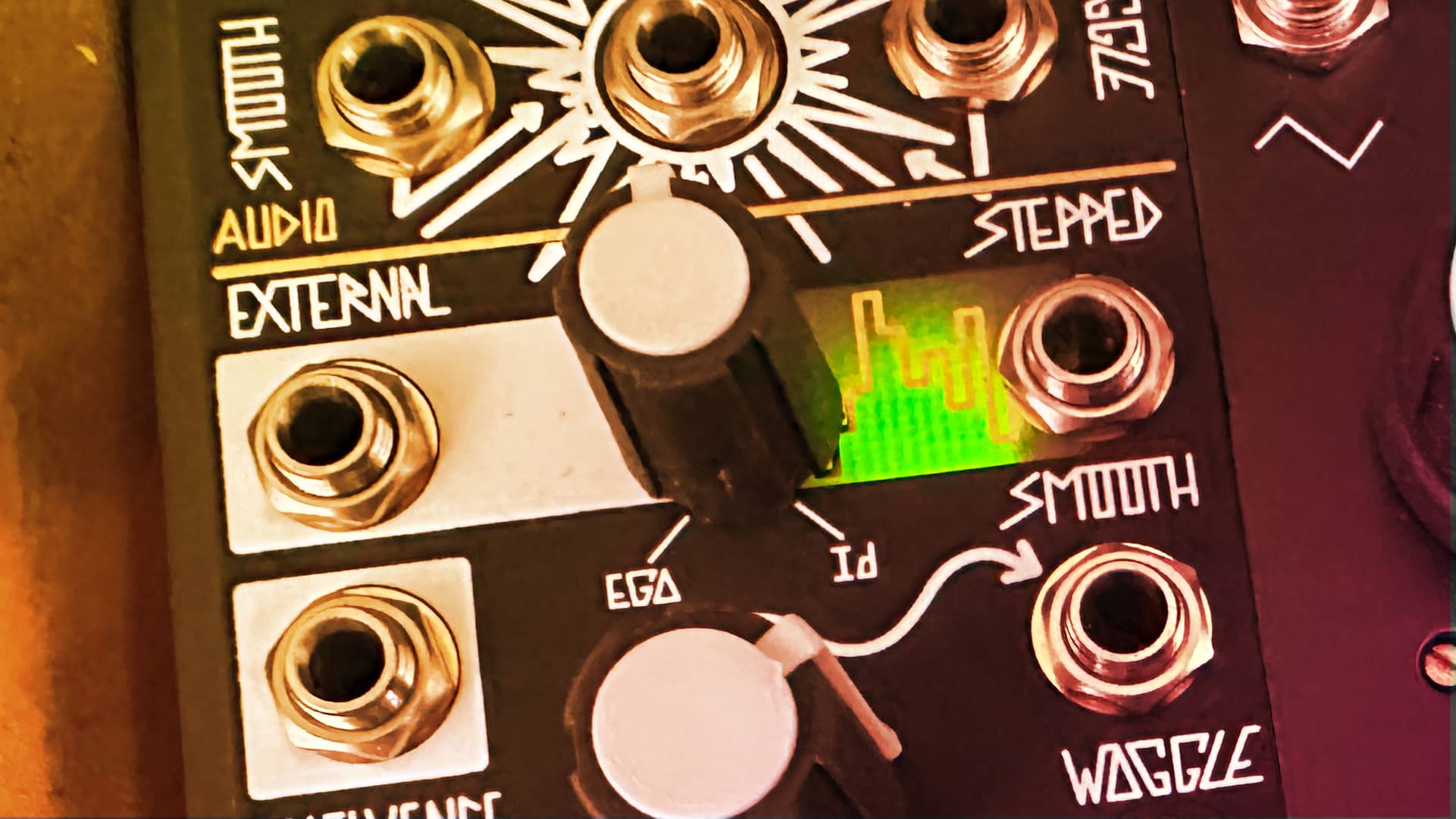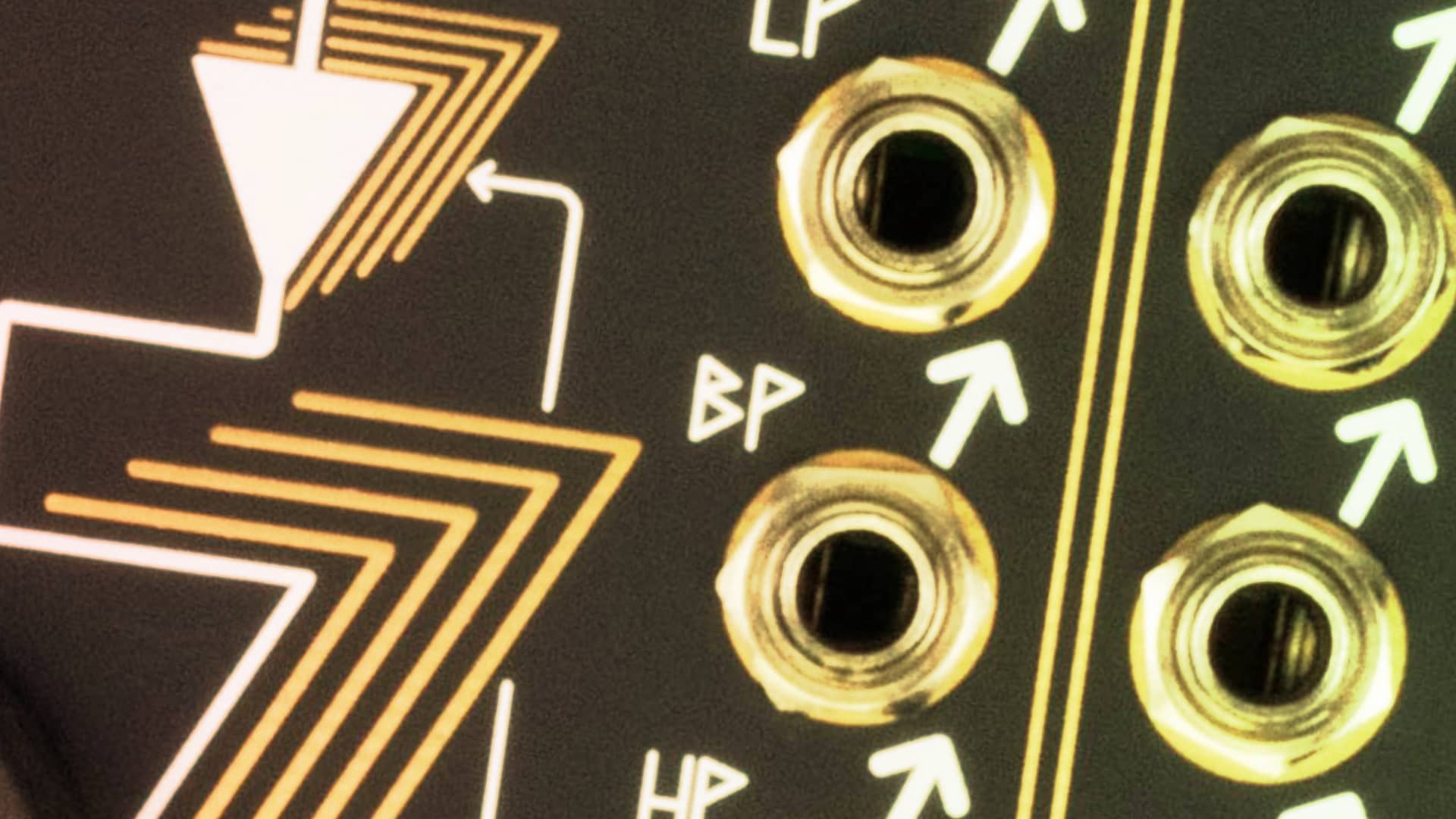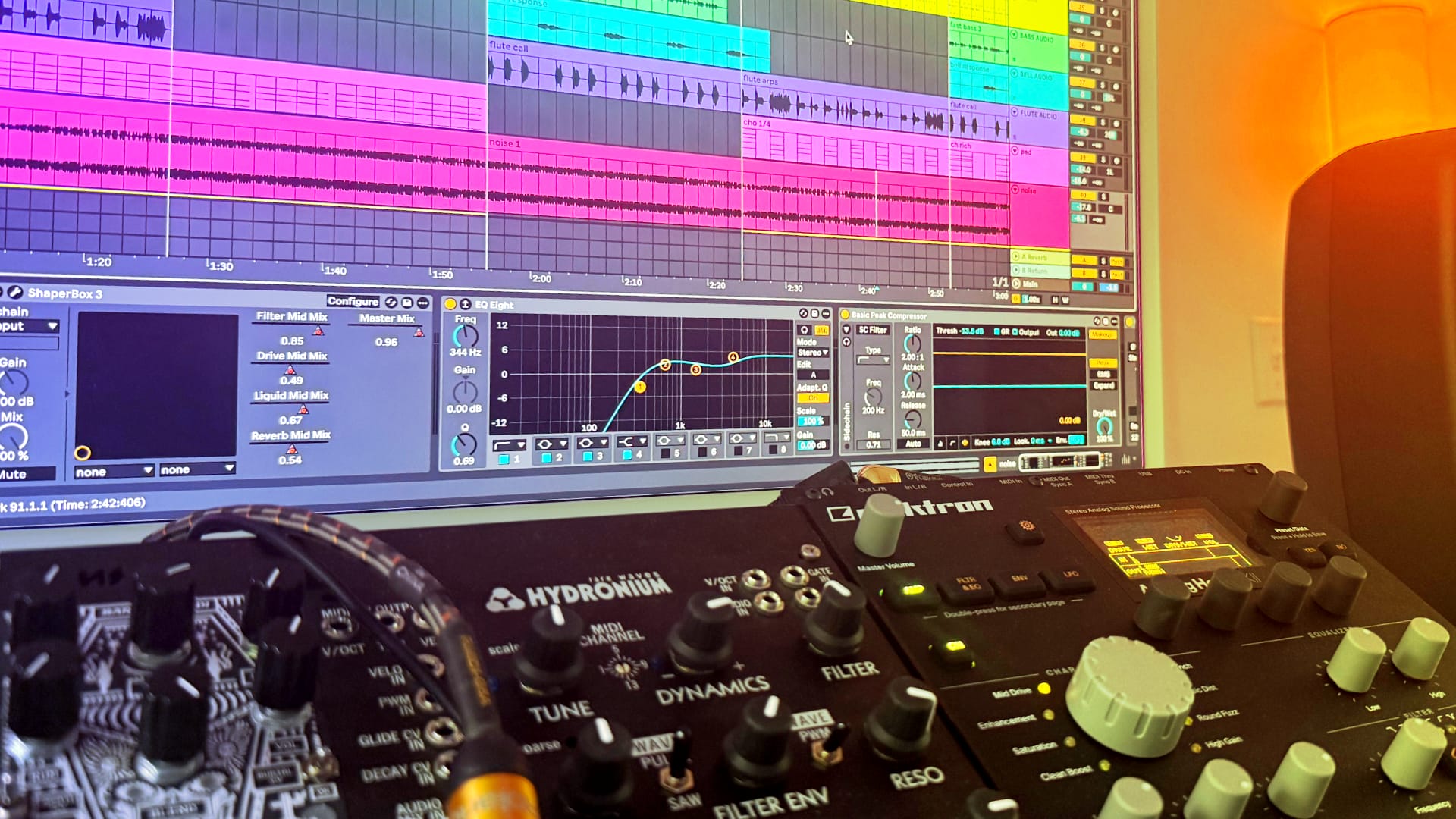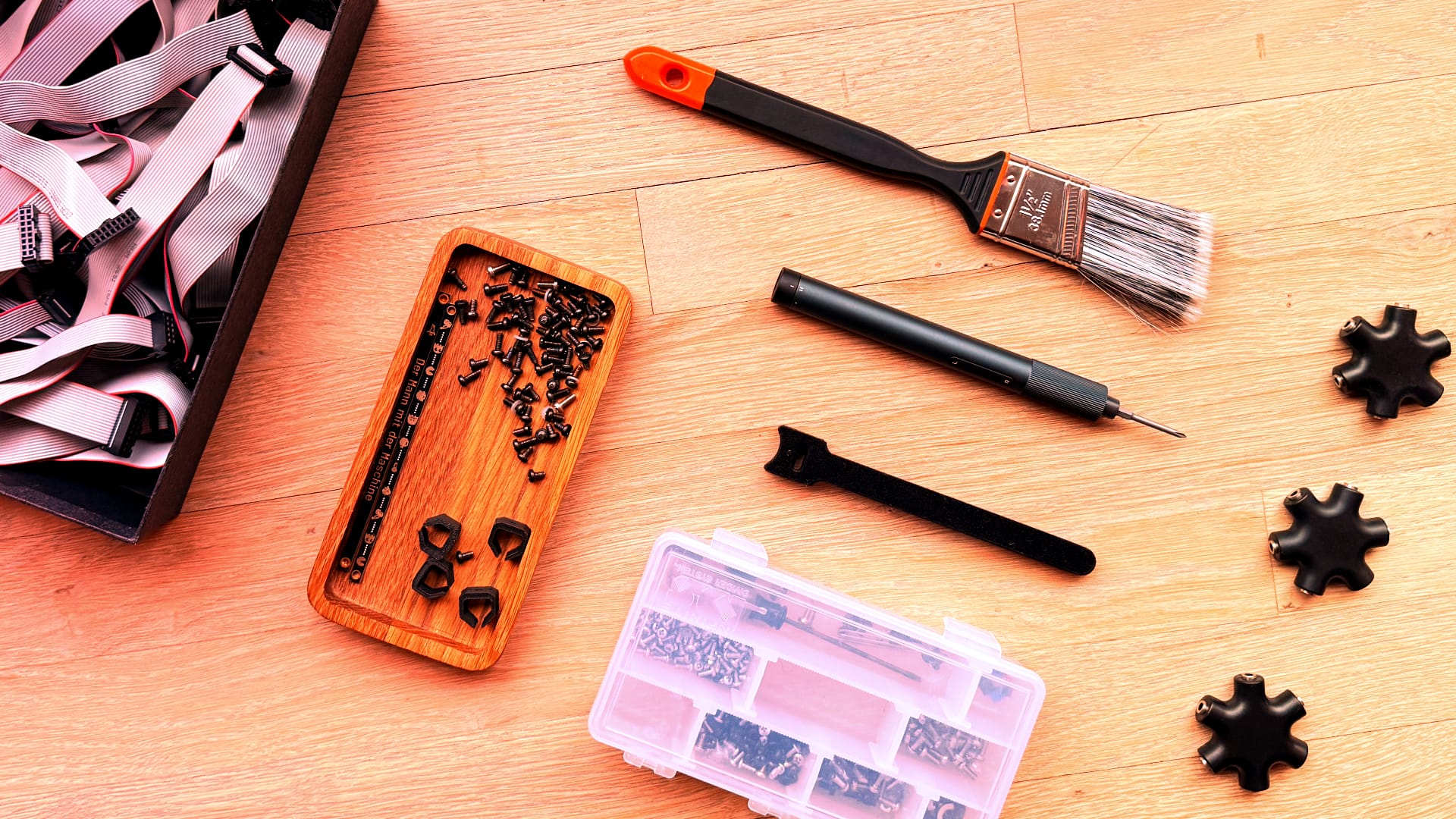This might be one of the more misunderstood and least used modules. I’ve seen so many beginner systems that do not include a sample and hold. They can be forgiven for their junior noobness, but I’ve also seen lots of more seasoned synth seniors neglecting its usefulness and value. In this article, I hope to offer many practical reasons why you should be using sample and hold.
In another Knobulism article, Humanizing Sequencer Rigidity, I write about how you probably have heard a phrase similar to “electronic music has no soul.” I take a stab at breaking down why someone might think this way, and instead of repeating myself, I recommend reading it as a companion to this article.
Capable of more than just adding randomness and “feel,” it can actually be a precision tool ensuring your patch behaves in the exact manner you want. A sample and hold usually consists of three parts
- Input: This is where you put your source signal to be sampled. That signal can be anything you desire from CV through audio rates.
- Trig In: A gate or trigger at this input will tell the sample and hold when to take a voltage sample of the input.
- Output: This is where the stepped voltage sample will exit the module.
Without further ado, I present to you practical patches for sample and hold.
R2D2 Beep Boop
This patch is what the uninitiated imagine when they hear the words, sample and hold. It is a common and cliché patch, but it is also one of the most fun, nostalgic, and smile-inducing patches ever.
For the gate source, try using 16th notes at around 120-140 BPM, but with random skips. I’ll leave it up to you to figure out how to get the skips.
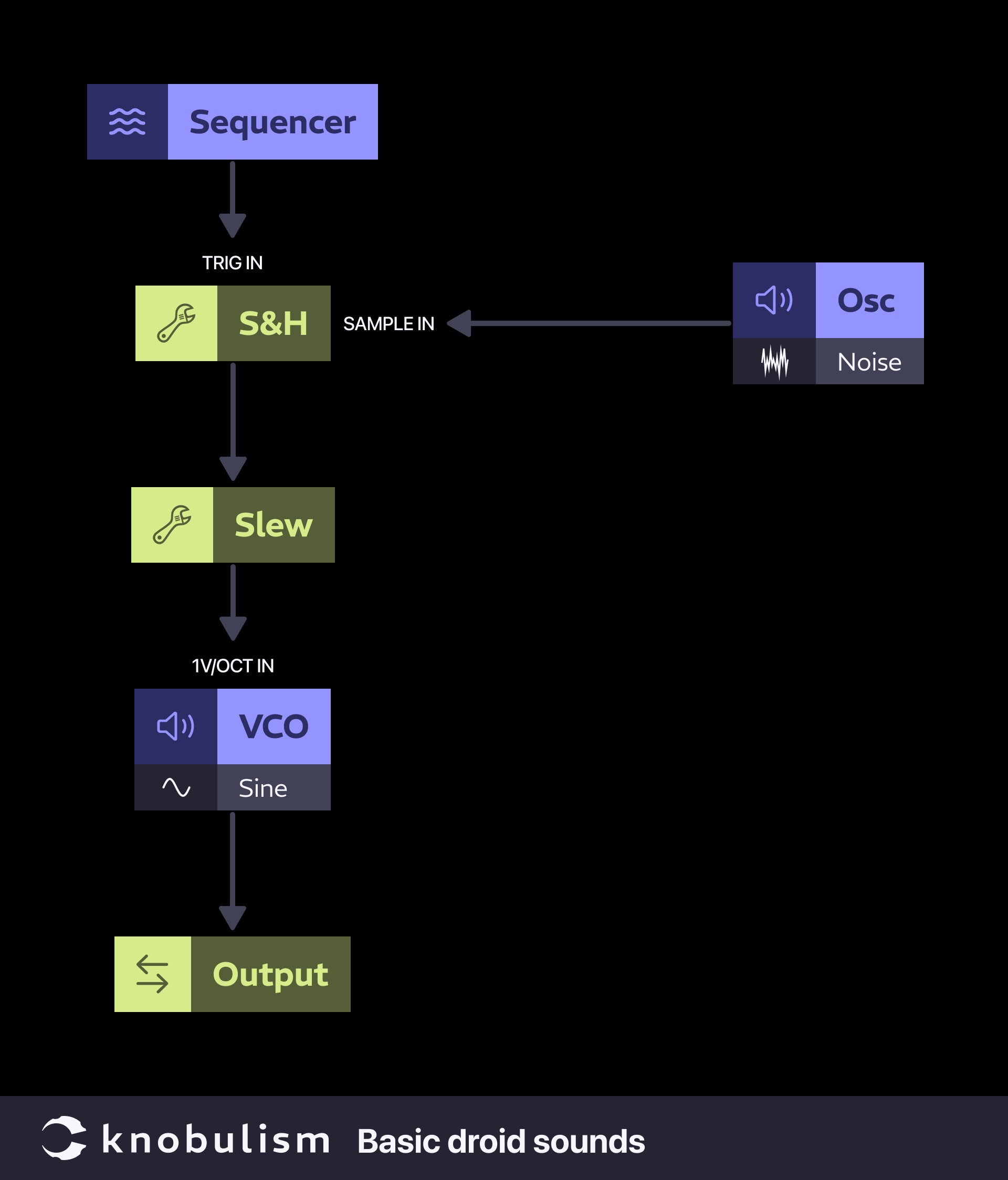
The slew isn’t required, but it adds a little flavor, so adjust to taste.
Add Harmony to Your Melody
A less common, but super helpful use for sample and hold is to fix trailing pitch artifacts on longer notes. Sometimes when you have a melody sequence with a relatively long decay on notes, you may hear pitch changes because the length of your note spans multiple steps, and those steps might output pitch CV different from the starting pitch. This can be remedied pretty easily with a sample and hold by leveling the pitch CV for the duration of the note. This patch not only illustrates that concept but also creates harmony from your melody.

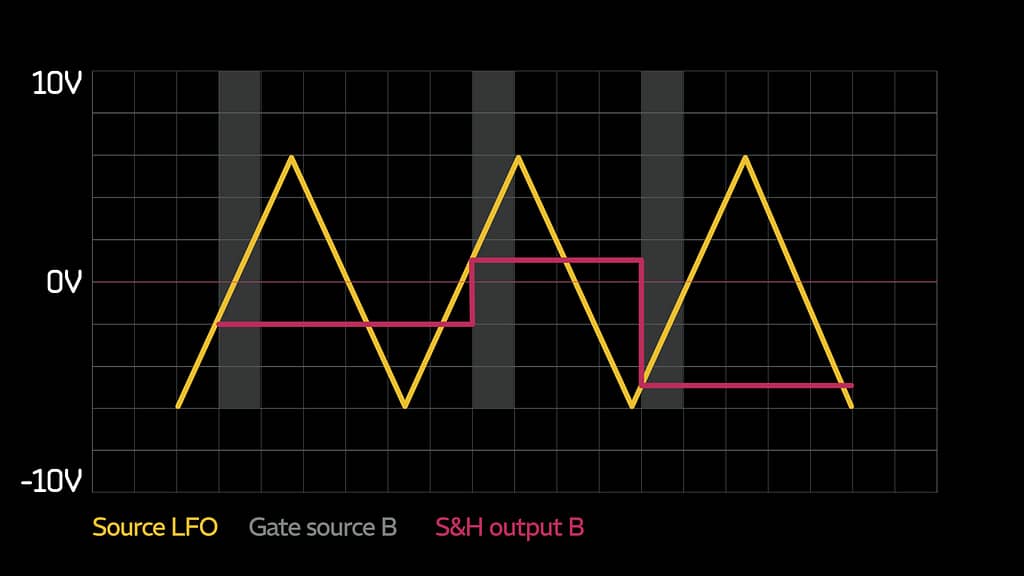
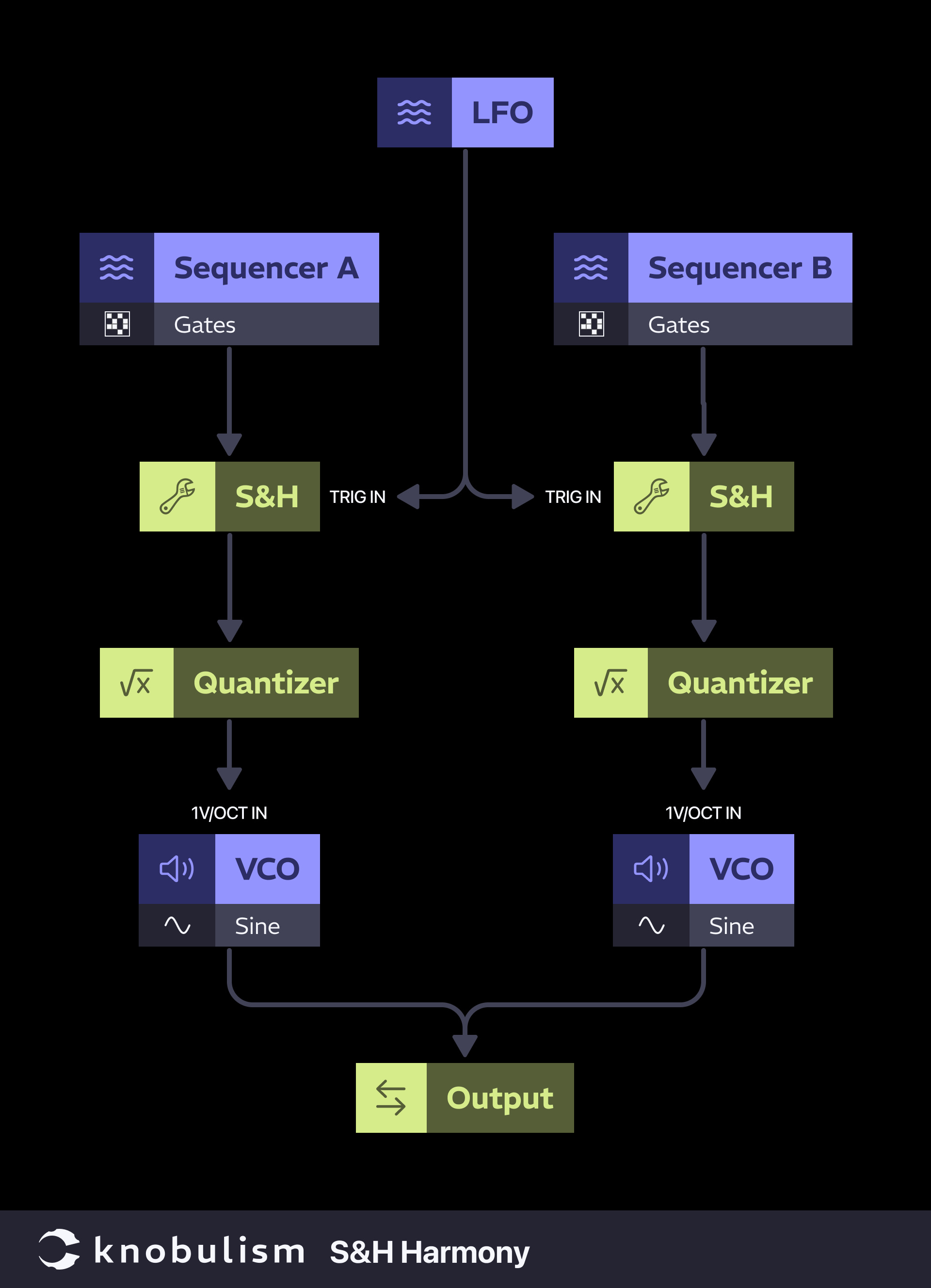
Variable Tempo or Sloppy Clock
In live music, there are often minute changes in tempo where it increases and decreases from the standard. Different from moving steps in a rhythm forward or backwards to achieve swing or groove, the actual bpm is variable. Similarly, tape machines, being mechanical in nature, had minor variances in speed, especially cheaper consumer products like cassette players. Both of these can create cool effects where the music feels kind of woozy, dreamy, or swaying.

This technique works best with sequencers that advance clock on the rising edge.
Auto Arpeggios
Feeling like your patch needs a little something extra but you are feeling kind of lazy? Then this patch is for you. Bad jokes aside, this is a really cool way to get your modular to automate some work for you while you focus on other aspects. Similar to the harmony patch it is using s&h to extract pitch from a LFO but this one resets the LFO so the arpeggio is always the same amount of steps. Set the reset gate to 1 bar or more for longer sequences.
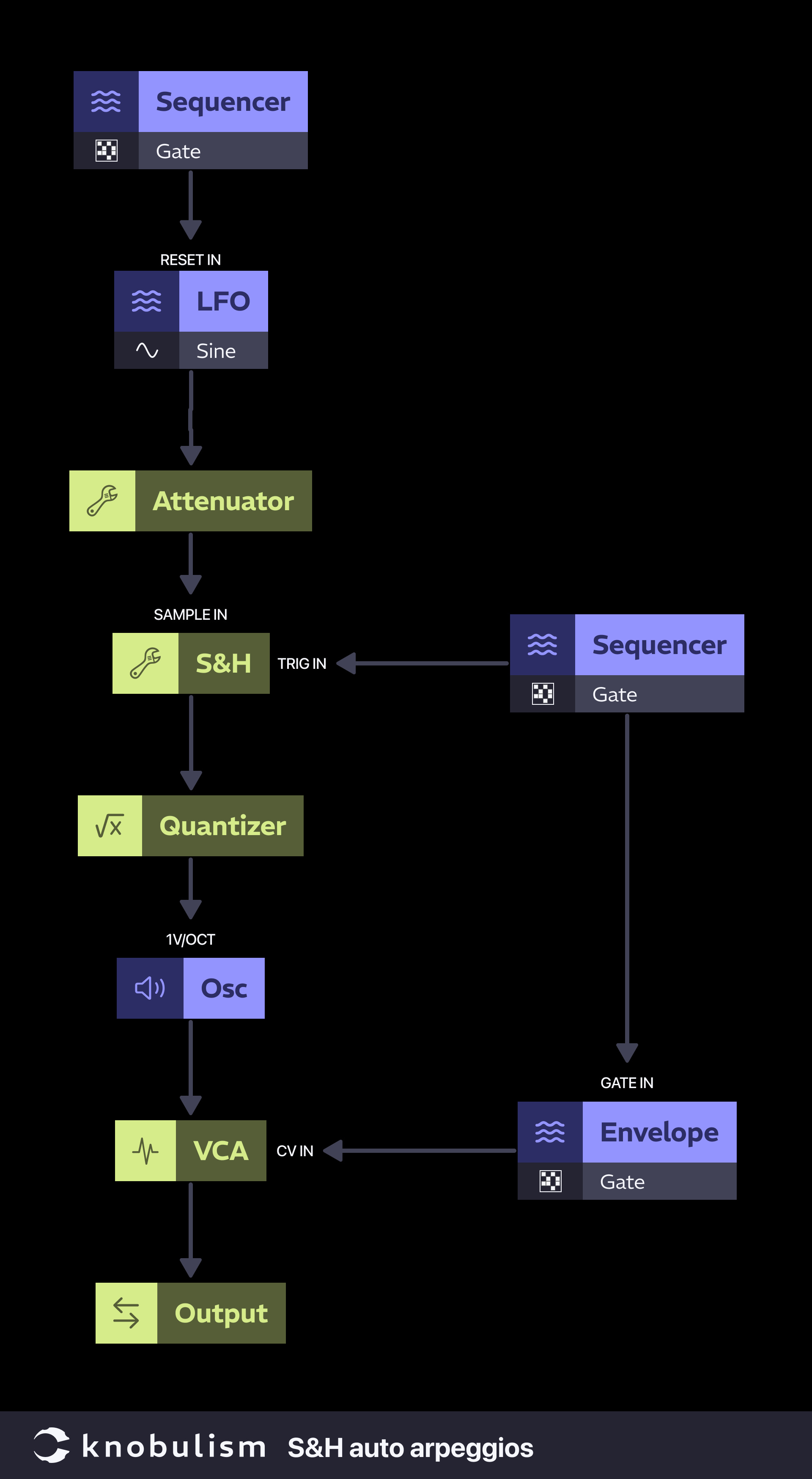
Imagine combining this patch with the melodic harmony patch above.
Bit crusher
What happens when you sample audio instead of CV? Basically, the same thing. The sample and hold will output stepped voltage at the level that is sampled when a trigger is received. So, if that trigger is also running at audio rate, you are going to get a stepped version of your input waveform at the output, just really fast.
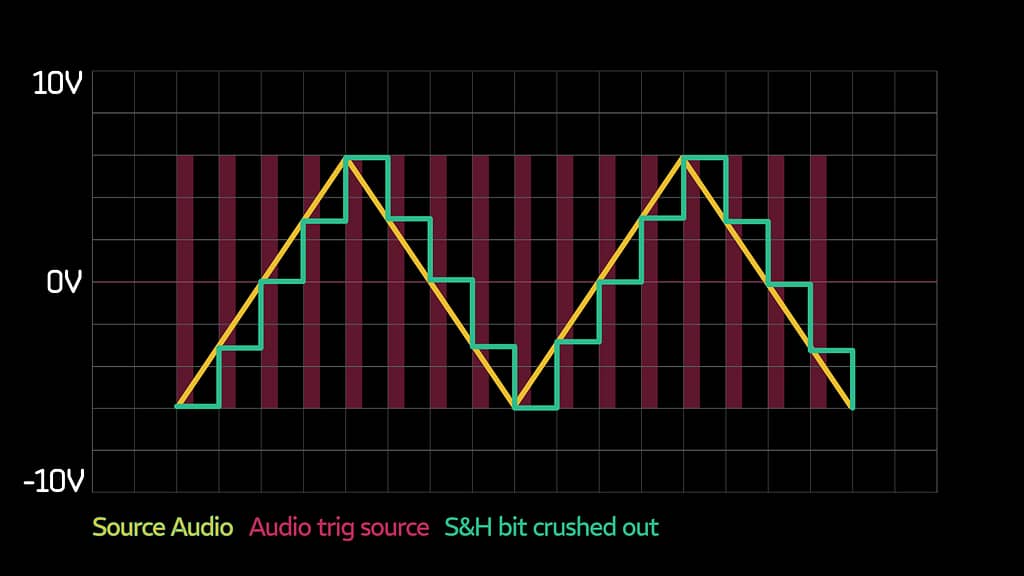
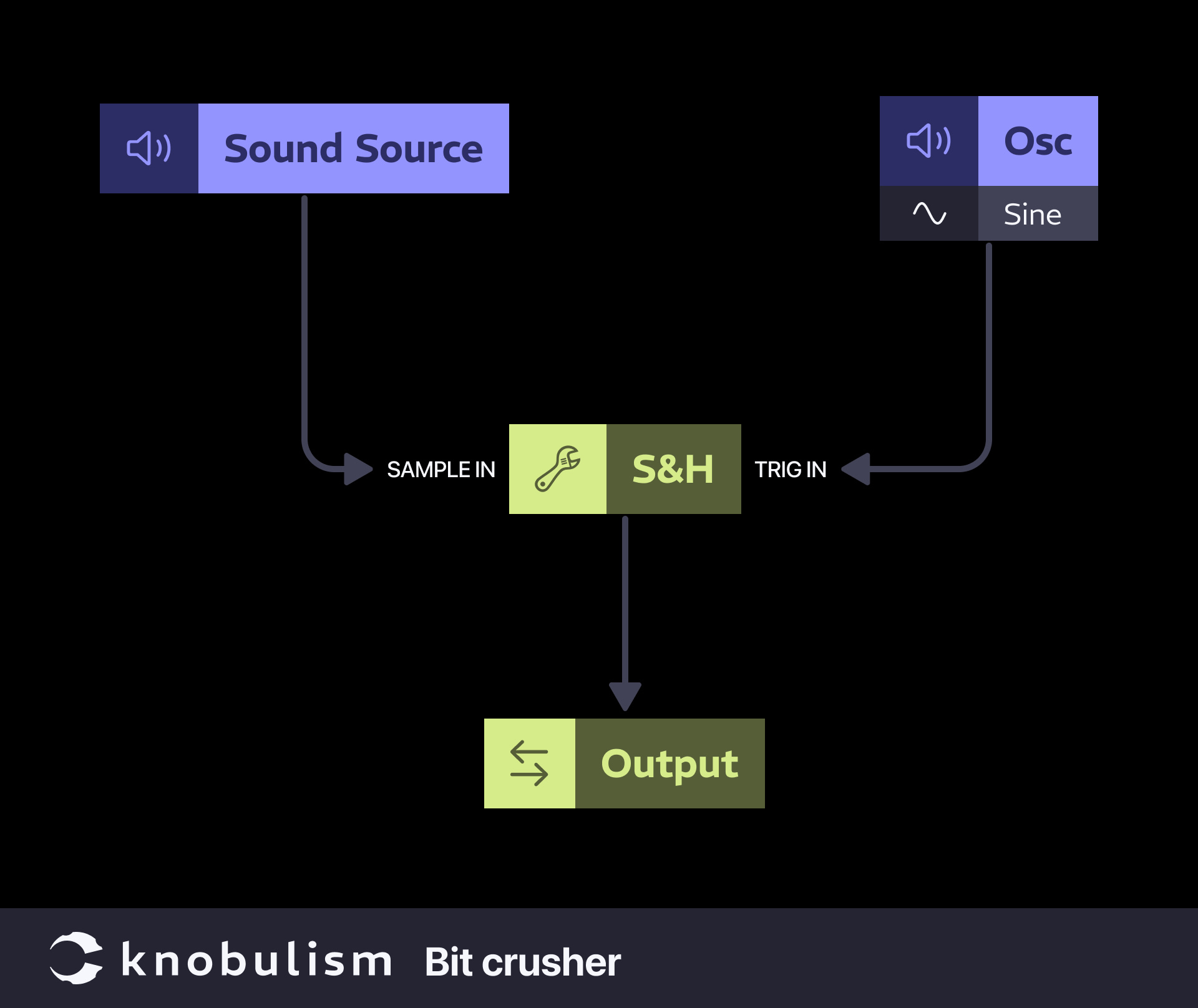
Generative melody
If you modify the earlier auto arpeggio patch to be a bit more random, the result can be never-ending, never-repeating, generative melody. This is a relatively simple generative patch very loosely inspired by the famous Krell patch by Todd Barton, but more harmonically in tune and rhythmically in time.
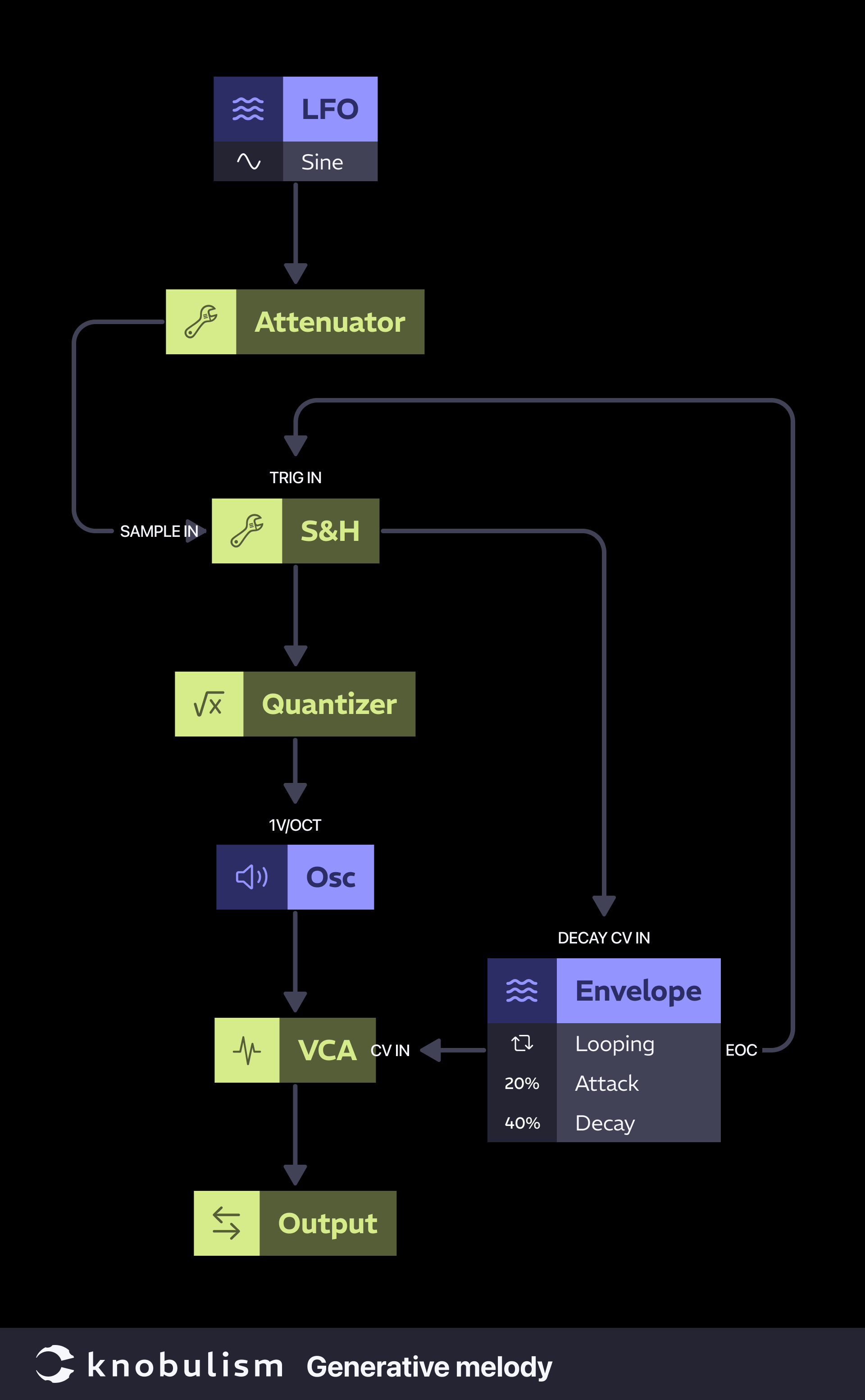
I hope this article has shed some light on the often overlooked sample and hold module. Whether you’re aiming for random bleeps and bloops or precise control over your patches, the sample and hold is an incredibly versatile tool that can add depth and character to your modular setup. So next time you’re planning your system, don’t skip out on this gem. Happy patching, and may your synth adventures be ever-exciting!

